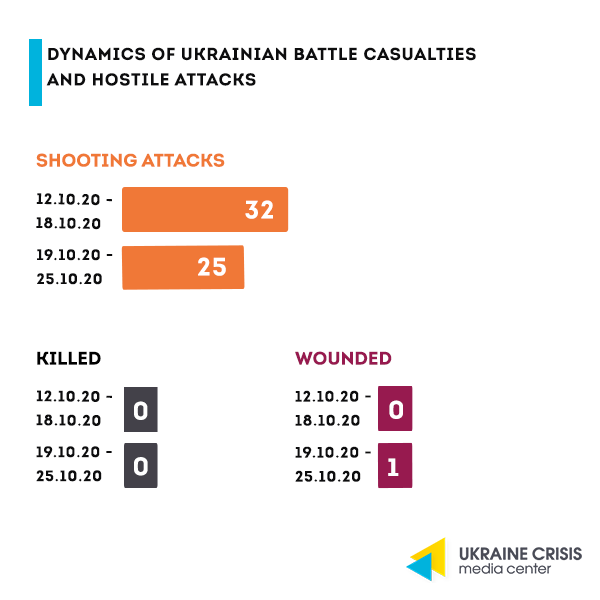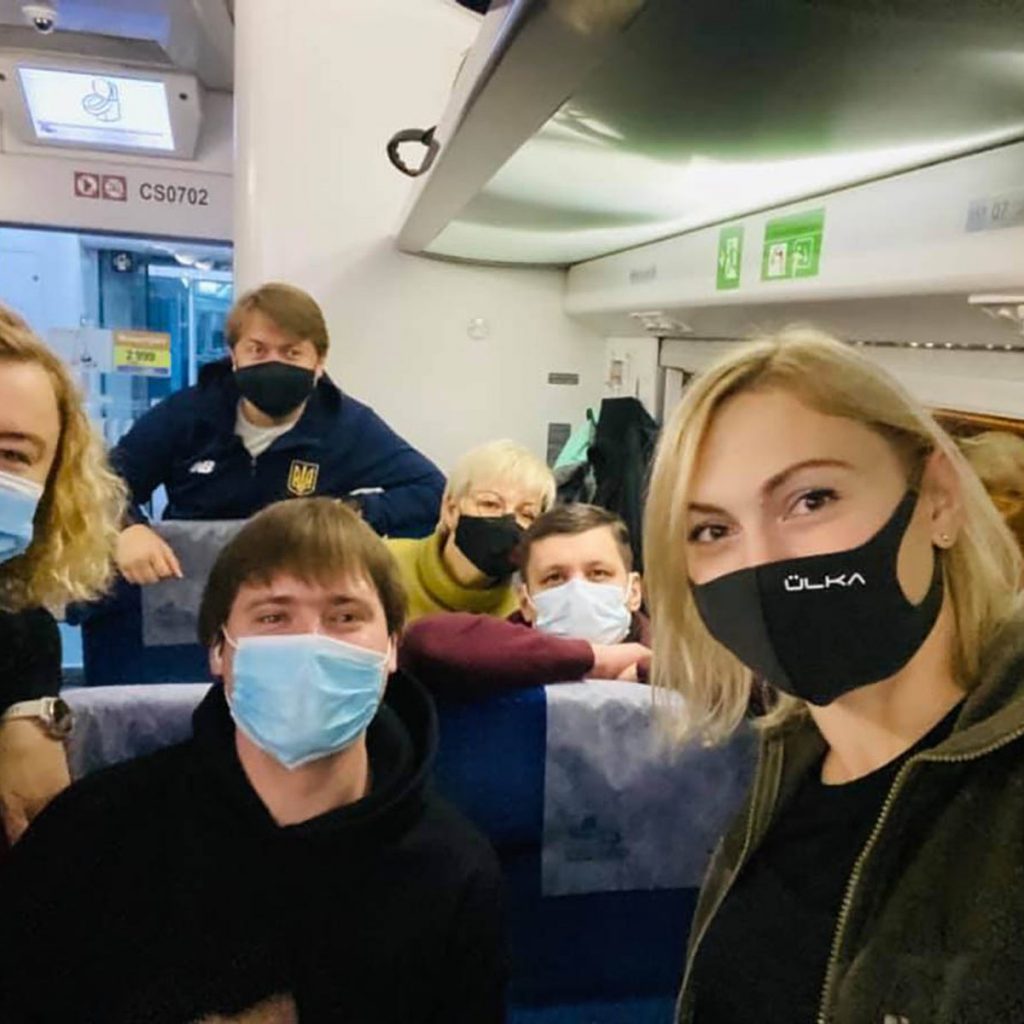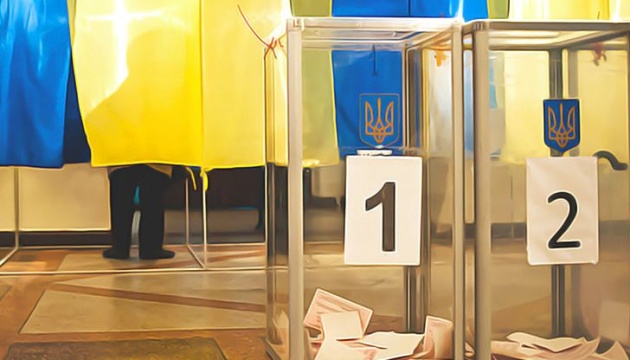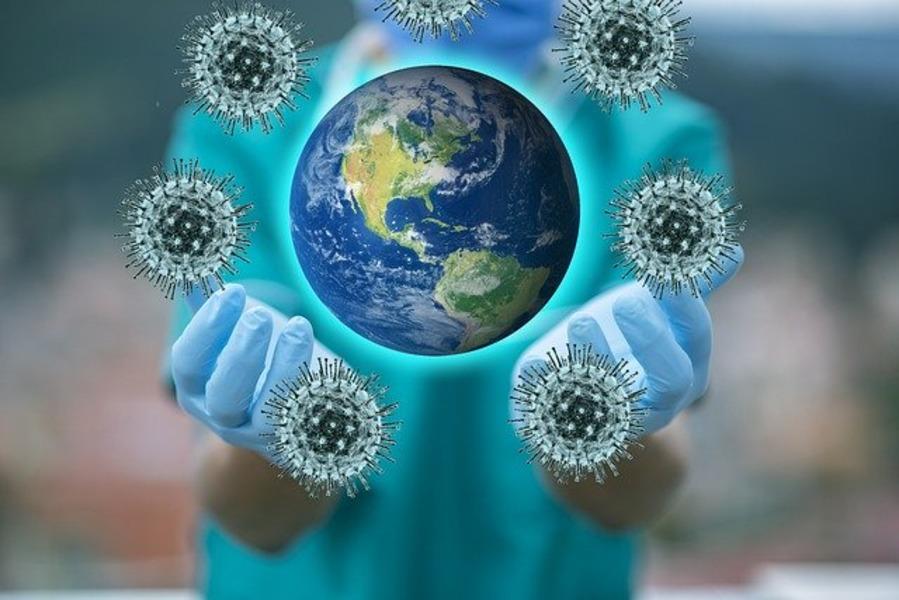Situation in the combat zone

Last week, the situation in the combat zone was calm. On October 25, Ukrainian troops recorded one ceasefire violation by Russia-backed militants. In the evening, they fired from hand-held antitank grenade launcher near Avdiivka.
“Servant of the People” MPs visit Donbas. On the week prior to the election day, about 100 MPs from the majority party “Servant of the People” (Sluha Narodu) visited the frontline area. According to the “Servant of the People” MP Tetyana Tsyba, they arrived in Kostiantynivka, Donetsk region. “From Kostiantynivka we all travelled to different locations,” the MP added.

She said the MPs that numbered about 100, were taken to the “actual trenches”. They were staying with the military units deployed to the contact line, by one or in a group of two. “Some were hosted in dugouts, others who visited the units deployed to frontline villages, stayed in the houses on the contact line,” the MP said.
Deputy head of the faction “Servant of the People” Yevhenia Kravchuk, in a comment to UNIAN news agency said that the information that the MPs had collected will be put together. “We will collect and systematize it, and will then produce a comprehensive analytical report on a variety of issues,” Kravchuk said adding that some issues might require filing of requests to the government.
President Zelenskyi appeals to the UN. Marking UN’s 75th anniversary, President Zelenskyi met with the UN System Resident Coordinator in Ukraine Osnat Lubrani. The President called on the UN to jointly develop an action plan to rebuild Donbas after it is de-occupied, and to participate in a project for potable water supply in the region.
“We would like to draw your attention to an important project that we’re having difficulties implementing with the government budget only. It is about potable water in Donbas. To remind, ‘Voda Donbasu’ (‘Water of Donbas’, a municipal water utility – edit.) supplies water in Donbas – not only in the government-controlled part, but also in the temporarily occupied area,” Zelenskyi said.
He added that the project foresees both reconstruction of the water pipeline and construction from scratch. Switzerland is taking part in the project implementation.
Local elections in Ukraine: what you need to know

On October 25, local elections were held in Ukraine. These are the first elections under the new voting system and the first elections after the decentralization reform started. Thus, compared to the 2015 election, more resources and decision-making freedom will be at hand locally.
Live updates of the voting results and vote counting progress were made available in English by UkraineWorld at the link.
As of this writing, exit poll results and voter turnout are known.
Low voter turnout. Voter turnout at the 2020 local elections is quite low – about 36-37 per cent, the 2015 turnout was 46.5 per cent. The data is provided by the Civil Network OPORA and the Central Election Commission.
According to OPORA, voter turnout at the October 25 election was 35.94 per cent. A higher turnout was recorded both at the 2015 local elections – 46.5 per cent, and at the parliamentary election last year – 49.3 per cent. Western Ukraine recorded the highest voter turnout.
Sociological group “Rating” held a telephone survey (CATI method) interviewing 1,200 people that did not vote, in an effort to find out why.
Turned out, main reasons were health conditions and place of residence not coinciding with where they’re registered. Twenty per cent of the absentees said it was for health reasons, 19 per cent said they live not where they’re registered, 15 per cent said they were busy, 14 per cent did not know who to vote for, 12 per cent were not interested, and 10 per cent blamed it on the pandemic.
Exit polls: in big cities, actual mayors are leading the race. It looks like the majority party failed to win the election. In a majority of big cities, actual mayors are claiming victory. Exit poll by “Rating” shows Vitaliy Klychko far ahead of other candidates in Kyiv, still, he did not win in the first round. His party gets a majority of votes.
In Kharkiv, Hennadiy Kernes wins the mayoral election in the first round, the exit poll commissioned by the Studio of Savik Shuster and “Ukraina 24” channel suggests. In Dnipro, Borys Filatov is leading the race, possibly winning outright in the first round.
Exit polls give a lead to Odesa’s actual mayor Hennadiy Trukhanov, followed by Mykola Skoryk of the “Opposition Platform – For Life” party (Opozytsiyna Platforma – Za Zhyttia).
In Lviv, actual mayor Andriy Sadovyi and Oleh Syniutka of “European Solidarity” party (Yevropeiska Solidarnist) qualify for the second round.
President’s five questions: how Ukrainians answered. Thirty three per cent of voters refused to participate in the nationwide survey of President Zelenskyi. Voters of “European Solidarity” were the largest group to turn down on it, 73 per cent refused to be surveyed, and 23 per cent agreed to answer.
Voters of the “Servant of the People” party were most active survey participants – 63 per cent vs 37 per cent, director of the Sociological Group “Rating” Oleksiy Antypovych is quoted as saying.
According to “Rating’s” exit poll, here’s how Ukrainians answered the five questions.
Eighty-one per cent said yes to life sentence for large-scale corruption, while 16 per cent disagreed.
Forty-five per cent said they support a free economic zone in Donbas, 43 per cent said they don’t.
Over 95 per cent said the number of MPS should be cut to 300, while four per cent disagreed.
Seventy per cent said they support legalization of medical cannabis to reduce severe pain in patients, 24 per cent are against.
Seventy-eight per cent of the surveyed said Ukraine needs to claim internationally its security guarantees under the Budapest Memorandum, while 10 per cent disagreed.
“Democracy in action”: G7 Ambassadors comment on election. Ambassadors of the G7 member states commended Ukrainians for voting at the local elections, referring to them as “democracy in action.” The statement was released on Twitter.
The diplomats said they were also hopeful that the 18 communities that could not vote at the local elections will be able to exercise their right the soonest possible.
To remind, local elections were not held in some of the communities in Donetsk and Luhansk regions, based on the submissions that civil-military administrations presented to the Central Election Commission. Obviously, no elections were held in the occupied territory either.
How Ukraine is fighting COVID-19

As of Sunday October 25, Ukraine recorded 5,426 new coronavirus cases. Also, 1,029 patients had recovered and 73 had died of Covid-19 complications.
Since the pandemic began, Ukraine has recorded 348,924 coronavirus cases. A total of 142,537 people have recovered and 6,464 have died. There are 199,923 active cases in the country.
On Sunday October 25, healthcare authorities conducted 33,771 tests including 28,779 PCR tests for active SARS-CoV-2 infection and 4,992 ELISA antibody tests.
Situation in the occupied territory. The territory beyond the government control in Donbas is also observing a spike in coronavirus infection, while the actual number of cases is unknown. Occupation administration in the “DPR” reported a total of 5,200 infections and over 340 deaths. “LPR” claimed over 1,300 total cases and 64 deaths. Since September, the numbers doubled. Daily new cases also increased two- to threefold.
Analyst at the Donetsk Institute of Information Vitaliy Syzov said that tight restrictive measures had not been introduced in the occupied territory: public transport, companies and retailers never ceased operation, while mask-wearing and social distancing was not widely practiced or controlled. He said it intensified the coronavirus spread causing highest-ever infection totals.
As part of the restrictive measures in place, the occupation administration of the “DPR” shut all crossing points into the government-controlled territory. Working hours of the Novotroyitske-Olenivka crossing were restricted. Road connection between the “LPR” and “DPR” was cut seven months ago, and has not been reopened. A crossing point in “LPR” shut after the government-controlled crossing near Stanytsia Luhanska ceased operation. It used to service 1,500-2,000 people daily who were crossing from/to the government-controlled area. Residents in the occupied territory are now cut from the territory controlled by the government.




